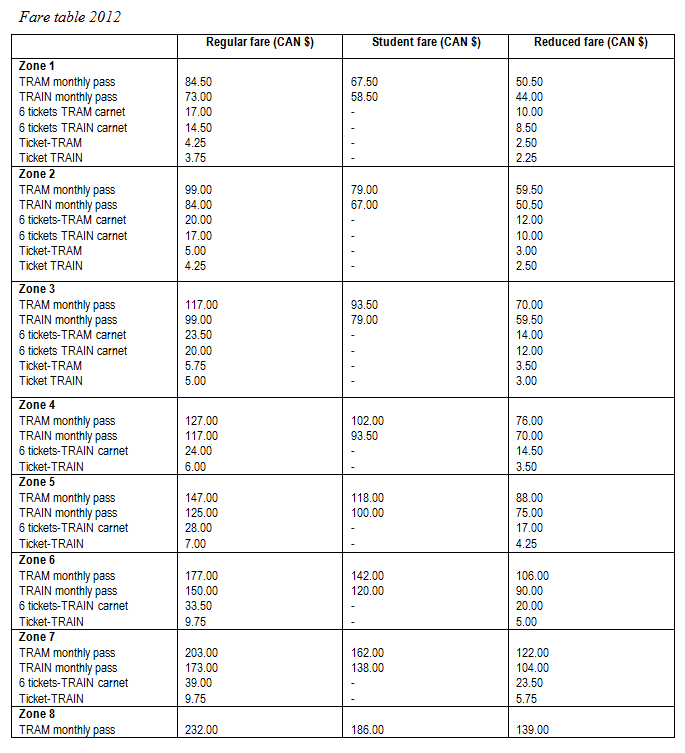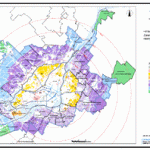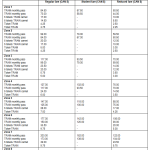Fares :
Presentation of the fare and ticketing system :
The metropolitan fare system governs the inter-system fare for all transit services in the Montréal region, which are provided by 14 organizations. The TRAM monthly pass, which allows users to travel on metro, train and bus, also gives customers a discount of 15% to 25% compared to the purchase of multiple passes.
The metropolitan fare increases according to eight concentric zones defined by the distance from downtown Montréal. Zones 1 and 2 are located on the Island of Montréal. Zone 3 covers part of Island, plus Laval and Longueuil. Zones 4 to 8 cover the northern and southern off-island suburbs.
The AMT collects the fare revenues of metropolitan transit passes and tickets and redistributes them with the transit authorities based on the fare holders’ usage of their respective systems. The expertise that AMT has developed in this regard contributes actively to the creation of new rules for organizing and financing metropolitan transit and to a better understanding of the major issues within the metropolitan community.

Funding of public transport in 2010 :
The public transit operation funding for all public transit organisations in the region comes from sale tickets revenues (50%), subsides from municipalities (36%), from provincial government (7%) and from AMT (8%).
AMT is participating in financing the operations of the 14 public transit organizations in the region (over 77 million Euros in 2010).
Current developments and projects :
COMMUTER TRAIN SYSTEM
The Train de l’Est is filling a need for permanent public transit infrastructure in eastern Montréal and the northeastern periphery.
This large-scale AMT project, currently underway, involves the construction of 10 new train stations, various railway trestles and overpasses, tunnels and walkways, along with several kilometers of railway tracks. The new line will be able to transport 5,500 commuters during each of the AM and PM peaks, almost 30% of whom are currently travelling by car.
The 52-km-long Train de l’Est commuter rail line will allow commuters to transfer to the Orange line of the Metro (the Sauvé and Bonaventure (Central Station) metro stations). Starting in Mascouche, the train will pass through Terrebonne, use the median of Highway 640, and link up to the CN railway in Repentigny (Le Gardeur sector). The train will pass through Charlemagne, the north-eastern part of the Island of Montréal, and connect to the Deux-Montagnes Line. It will enter downtown Montréal through the Mount Royal Tunnel.
The idea of having the train running along the median of Highway 640 median allows the use of existing transportation right-of-way and minimizes the impact on neighbouring farmland.
Maintenance centers
We want to acquire our own garage sites and maintenance centers for our equipment in order to get a control on maintenance quality.
After 16 years of operation, during which commuter train ridership has more than doubled, the AMT must plan ahead for the maintenance of its commuter train fleet. To meet increasing demand, the AMT has ordered 160 dual-mode locomotives in order to increase the capacity of its current lines by 70% and to implement the new Train de l’Est line. The fleet will go up to 300 units by 2015. In keeping with its growth objectives, the AMT must be able to accommodate, and especially, to control these major investments.
Equipment maintenance is presently handled by Bombardier and Canadian National (CN) at different existing facilities (Sortin, Saint-Luc and Taschereau marshalling yards as well as Central Station). These facilities, which were initially designed for freight equipment, do not offer availability, modern equipment, trained personnel or needs prioritization for the AMT.
RTMA (METROPOLITAN BUS SYSTEM)
The planned improvements to the RTMA include extensions of reserved lanes, the implementation of preferential measures for buses, and the development or expansion of several terminuses and parking lots throughout the Montréal metropolitan region.

